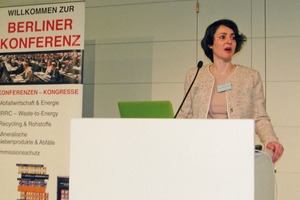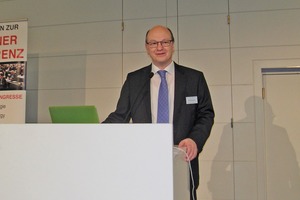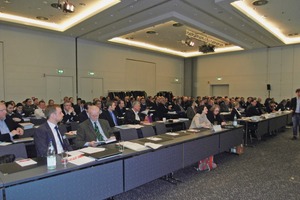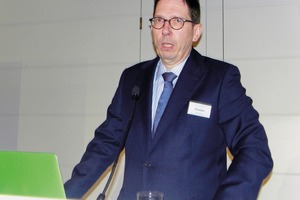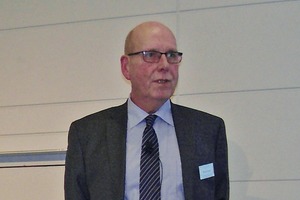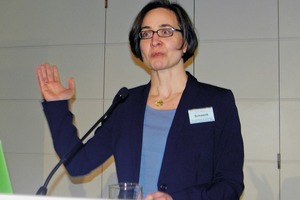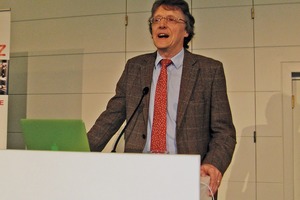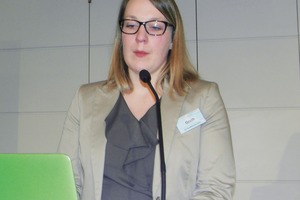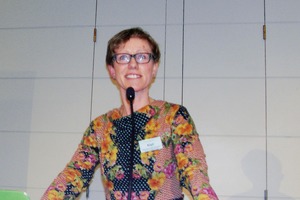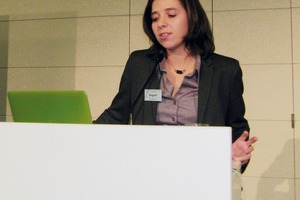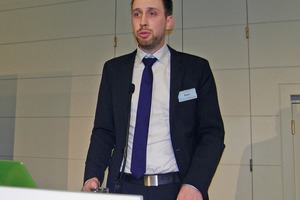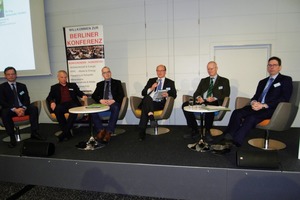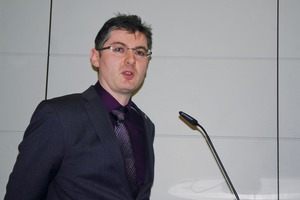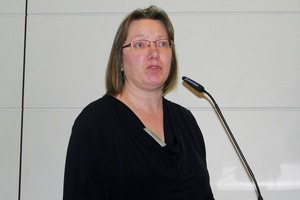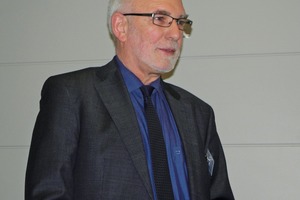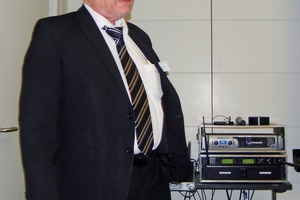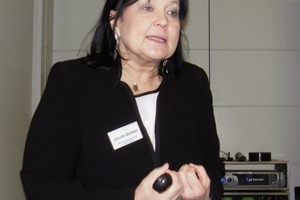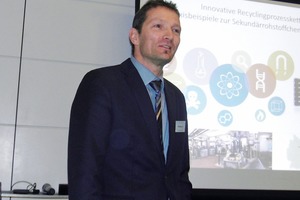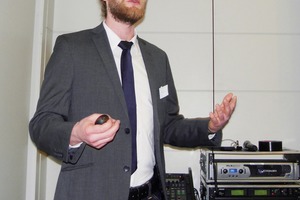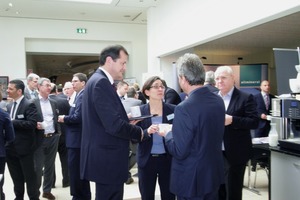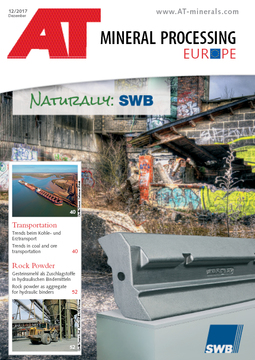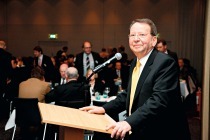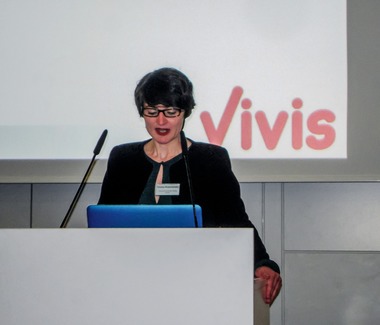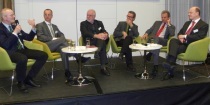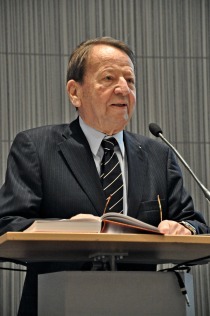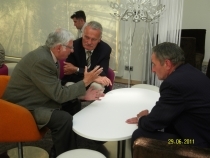10 years of waste and circular economy and economy of recources
As in previous years, topical supra-disciplinary subjects were on the agenda of the first day’s plenary event, while specific technical contents were the focus in the papers presented at the parallel events on the second day of the conference.
1 Plenary session
The around 300 visitors confirmed the stable number of attendees in recent years mentioned in his “Ten years of the BR&CC - retrospective and prospects” by Prof. Dr.-Ing. Daniel Goldmann, also of Clausthal University of Technology, who this year bore responsibility for the scientific leadership of the conference. Prof. Goldmann, like the preceding speaker, also found moving words for the two aforementioned professors and emphasised the gaping voids which their deaths have left behind for the conference. He focussed, above all, on the achievements of Prof. Thomé-Kozmiensky in developing the event into one of Germany’s most important, internationally attended, recycling conferences. This process of evolution, in combination with a broadening of the range and diversity of topics examined, in 2014 resulted in the elimination of mineral byproducts and waste from the agenda and the treatment of the topics in a dedicated annual conference. The result of the ten years of BR&CC can be found in the books published by TK Verlag Nietwerder, which contain the overwhelming majority of all papers and now constitute a wide-ranging encyclopaedia of recycling and of the waste-management/circular economy. The tried-and-proven structure of the conference is also to be retained in the future, and topical subjects, such as the resources turnaround 2049, the dissipation of a large range of recyclables, anthropogenic resources deposits and the digitisation of the waste-management industry – Recycling 4.0 – will be reflected in the agendas of upcoming years. Intensification of international networking is, in this context, of extreme importance for Prof. Goldmann. The continuance and expansion of international participation – including, this year, attendees from Austria, Switzerland and the Netherlands – is an essential element of the conference, to make it possible to look beyond the “narrower German scene” and to follow developments within the EU and their implementation in national law not only in Germany alone.
Outside of the fact that resources efficiency, national and global assurance of supplies of resources, substitution and sustainability continue to be the dominant topics, it is possible only with difficulty to state a unifying theme for the papers presented during the plenary session.
Dr.-Ing. Alexander Gosten, of BSR Berliner Stadtreinigung AöR, for example, reported on the secondary-resources potentials of a municipal disposal organisation. His municipal enterprise operates thirteen recycling plants in Berlin, of which five are partly-owned affiliates. This speaker, well-known for his realistic assessments, outlined the shortcomings in definition of recycling rates and the thus resulting discrepancies between legal targets and actual figures, drew attention to the great differences in recycling within Europe (more than 100 million tonnes of waste continue to be landfill dumped each year in Europe even now!) and demonstrated that not every potential in municipal waste can be exhausted. There is, nonetheless, no lack of attempts to achieve a high added value from municipal waste, by means, for example, of Hamburg’s “Stilbruch concept”, which was examined by Jörg Bernhardt, of the Stadtreinigung Hamburg municipal, refuse and hygiene organisation, and which successfully achieves sustainability by means of reutilisation in the form of the non-destructive collection of large and/or unwieldy waste. A small contribution, without doubt, to the conservation of resources, and one necessitating a high labour input, but nonetheless an alternative for large cities.
The comments by Departmental Councillor Birgit Schwenk, of the Federal Ministry for the Environment, Nature Conservation, Building and Nuclear Safety (BMUB), Bonn, on resources efficiency within the context of the G 20, in which great expectations had been placed as early as the Berlin conference of 2016, like the address by Prof. Dr.-Ing. Vera Rotter, of the Technische Universität Berlin, on “The potentials and challenges of climate-protection technologies for recycling”, contained no essential new findings, but were, nonetheless, good overview papers. Senior Government Officer Dr. rer. nat. Helmut Löwe, of the federal research and education ministry, provided information on his ministry’s current financing of research into the subjects of innovations for resources efficiency and circular resources management. The most diverse papers focussed on the importance of networking as a force for innovation in assurance of supplies of resources and the corresponding research and this was, indeed, the subject of papers such as, for example, “EIT Raw Materials”, from the world’s largest and most important international consortium in the field of mineral resources, with more than 100 business partners in industry, research and teaching from a total of twenty-two EU member states. This address was presented by Nora Groth, of EIT Raw Materials GmbH, Metz (France). Another example in this field: GERRI, the virtual mineral-resources research institute, which was discussed by Dipl. Wirtsch. Geograph. Helene E. Köpf, of the Helmholtz Institute Freiberg. This is a national network for research into metallic and mineral resources, and takes the form of an alliance of five institutes. The aim here is that of representing all German research in this field, with the emphasis on resources technology, and of providing a contact point for players from the worlds of science, industry and politics on all matters along the resources chain, from primary mineral resources, up to and including recycling. It was regrettable that the address from the BMUB on the draft of the new Packaging Act had to be cancelled, in view of the fact that industry experts were again anticipating, after extensive discussions, only “a little amendment and not any genuine Recyclables Act”.
The paper by Dipl.-Geogr. Stefanie Degreif, of the Oeko-Institut, Darmstadt, on “Substitution as a strategy for the reduction of the criticality of mineral resources for environmental technologies”, examined the target of drafting a roadmap for substitution of critical resources in environmental technology. The hope remains that this will also actually find broad application in practice.
The operational level was the focus of the address by Maximilian Seier M.Sc., of the Technische Universität Darmstadt, who examined resources efficiency in manufacturing industry. As in papers presented at previous conferences in Berlin, he discussed the methodological bases for evaluation and benchmarking. He demonstrated, citing a practical example – chip-removing machining of metals – that assessment of the relevance of operational effects on various natural resources and simple but informative indicators by means of which the resources efficiency of specific processes can be quantified in practice, are a necessity.
The conclusion to the plenary event was provided by the paper entitled “Germany 2049 – on the road to a sustainable resources economy” presented by Dr.-Ing. Matthias Buchert, of the Oeko-Institut, Darmstadt, which also constituted the updating and expansion of numerous ideas and proposals which had already been discussed in Berlin in previous years. The speaker reported on a research project to be completed within a few weeks. It was assumed, for the examination of the various scenarios, that Germany would not – as previously assumed - shrink but that, instead, population figures would remain approximately constant. Seventy-five inorganic feed materials (ores, industrial minerals, construction input materials, etc.), twenty-two of which are mass feed materials at >100,000 t/a, as well as fifty-three non-mass input materials, at only a few thousand to a few dozen t/a, were examined as elements in the resources turnaround. It was ascertained that the criticality concept prevailing up to now is not adequate and that all three sustainability criteria (economic, ecological and social) must be taken into account and areas requiring attention prioritised. Resource-specific targets are necessary, since economic, ecological and social effects are extremely diverse. The relevant assumptions and targets must be reviewed by means of monitoring every four years, and updated if necessary.
2 Panel discussion
A panel discussion this year again concluded the first day of the conference. It was held under the rather less specific motto of “Discussion of current boundary conditions for recycling and waste management”. Highly capable speakers from politics, industry and science, chaired by Prof. Goldmann, approached this complex of topics, attempting to focus their thoughts on it in just a few core statements. Dr. Fendel, of Remondis Assets & Service GmbH & Co. KG, of Lünen, unequivocally associated, from the viewpoint of a commercial company, the route to more and better recycling with higher costs. On a global view, the finances for waste management companies originate from the landfills (see USA). Germany, however, practises recycling and is also subject to importation of volatile resources. More recycling – as needed for the resources turnaround – will mean capital-intensive investments, the refinancing of which can be accomplished only across longer periods of time.
The legislator, represented by Senior Government Officer Alexander Janzen, of the BMUB, based in Bonn, advises – in reply to enquiries concerning the improvement of resources efficiency – the concentration of material flows and the specification, on the criterion of volatile industrial metals, of which metals are still really needed. Returns of certain materials are not always optimum, and the experience of other countries should be incorporated here. On this subject, Prof. Pomberg, of the University of Leoben, Austria, noted that it is necessary to differentiate between mass and other types of waste. Austria initiated the separate collection of recyclables even prior to 1995, after which “recyclables-free” waste could only be incinerated, and not landfill dumped. It is necessary to note that recycling rates decreased, and are now at the level of twenty years ago, however; quantities have risen, but not quality. Dr. Gosten contributed his experience from the municipal sector concerning electrical and electronic scrap. Here, criticism continues of the Electrical and Electronic Equipment Act (ElektroG) and the Waste Electrical and Electronic Equipment Directive (WEEE), and amendment is necessary. Senior Government Officer Janzen pointed out that a differentiated treatment ordinance is being drafted. An impressive example of the contradiction between potentials and cost-induced practice in recycling was provided by Dr. Buchert, of the Oeko-Institut, Darmstadt: the recycling of gypsum is unquestionably rational. The current extremely low landfill prices leave no chance for recycling, however. Also relevant is the fact that plasterboard waste is now to be used in the Czech Republic as a binder in the country’s uranium tailings ponds – again, not genuine valorisation. Here, intensive cooperation with the authorities is an absolute necessity. Other discussion items included
Control mechanisms for material flows (landfill tax)
Removal of hazardous waste (Li-ion batteries and the hazards of incineration of life-expired vehicles)
Product responsibility
Digitisation in the waste-management industry
Prof. Goldmann, in conclusion, posed the question of the targets to be set in the recycling and waste-management industry. “The call for regulation is not always the solution, the provision of essential services is restricted to specific items, and that should also remain the case” (Dr. Fendel). “The boundary conditions must be right, and certain directives must be refined, in the case, for example, of industrial metals, and deposit systems should be introduced for certain battery types” (Dr. Buchert). “The amendment to the Commercial Waste Regulations (GewAbfVO), the most important reform project in this legislative session, and already passed by the Federal Parliament, should be adopted by the Federal Council as quickly as possible, and the amendment to the Packaging Regulations (VerpackV) also completed immediately. In the longer term, a European Circular Economy Act must be drafted” (Alexander Janzen). “The EU’s Circular Economy Package, which is currently undergoing the legislative process should, if possible, emerge as it was originally planned” (Prof. Pomberger). “In the waste sector, we need a financeable industry policy; the Federal Environmental Bureau should not forever be putting new hurdles in the way, since otherwise an increase in recycling rates will scarcely be possible (substitute building materials regulations, removal of insulating materials), and the use of recycling materials should be promoted in tendering procedures” (Dr. Gosten). All in all, a whole range of desiderata – but we shall see the extent to which they come true at the next Berlin conference!
3 Specialist sessions
An extensive range of interesting specialist address topics awaited the participants on the second day of the conference, in five sections this time round. Even the good timetabling of the conference did not make it possible to attend all one’s desired papers in the various sections, since there were also “subsections” within the individual sections. It is therefore possible to mention below only the focal topics and to briefly examine, from the vast range available, just a few papers and their authors by way of representative example.
3.1 Recycling of metals
The topics discussed included resources efficiency in the iron and steel industry, and also the recycling of stainless steels, including tungsten-containing scrap (Dr. mont. Stefan Luidold, University of Leoben), and of tantalum (Dr. Frank Schulenburg, HC Starck GmbH, Goslar). Not only landfills can be considered to be anthropogenic deposits: Prof. Dr.-Ing. Jörg Woidasky, of Pforzheim University of Applied Sciences, drew attention in his address to the aviation industry as just such a repository. Dr.-Ing. Alexander Gaun, Clausthal University of Technology, reported on the expansion and improvement of existing sorting methods for the processing of secondary feed materials via the use of the barrier-type eddy-current separator for fine particles already in service for the separation of non-ferrous metals in the recovery of tantalum condensers. The subject of structural and system-orientated fire safety in the waste-management industry, a topic increasingly gaining in importance in view of ever more complex and frequently highly combustible waste types, also featured in these papers.
3.2 Recycling of plastics and composites
The sorting of diverse types of plastic to permit use of the recyclates in high-value applications continues to be one of the targets of recycling. Sorting technologies are becoming ever more sophisticated. This was demonstrated, for example, by the paper titled “Sorting of black plastics by their polymer class using hyperspectral imaging technology”, by Ernie Becker, of RTT Steinert GmbH, Frankfurt. The so-called “BlackEye” sensor system, a combination of mid-infrared spectroscopy and hyperspectral imaging, is capable of identifying and sorting even soot-blackened objects. Jan Meyer, of UNISensor Sensorsysteme GmbH, Karlsruhe, examined a detection method, high-power laser spectroscopy, which generates material-specific spectra in the low-UV to NIR range even for black plastics, and is suitable for the sorting of plastics from shredder residues. The recycling of an increasingly widely used composite material - carbon-fibre-reinforced plastics (CRP) – is also proving problematical, and corresponding research activities present special challenges. The papers by Dipl.-Ing. Carsten H. M. Ozol (“Carbon-fibre recycling - Preliminary investigations of electrohydraulic digestion of carbon-fibre-reinforced thermoset”) and Dipl.-Wirtsch.-Ing. Thomas Krampitz (“Characterisation of dusts generated in mechanical comminution of CRP”), both of the Freiberg University of Mining and Technology, were thus highly topical and of the very greatest interest for the automotive and mobility industries, in particular.
A prime example of the complexity and complications of the recycling of highly evolved systems is the recycling of the rotor blades of wind-power installations, which was the subject of the address by Dr.-Ing. Alexandra Pehlken, from the Carl von Ossietzky University of Oldenburg, and Prof. Dr.-Ing. Henning Albers, of Bremen University of Applied Sciences. The increased use of carbon fibres, in particular, presents a great challenge in the recycling of such rotor blades. Even energy-route valorisation encounters significant problems. Despite numerous tests for comminution, pyrolysis, solvolysis and incineration, no route has yet been found for the separation of the individual components, with the result that there is still a lack of genuine valorisation routes for such rotor blades.
3.3 Recycling of vehicles, electrical/electronic equipment and batteries
No less than nine papers were devoted to this important recycling topic, ranging from the ultimate fate of non-recycled decommissioned vehicles, via recycling rates in 2015 and the quality of their valorisation, up to and including specific recycling tests. Prof. Dr.-Ing. Holger Lieberwirth, of Freiberg University of Mining and Technology, for example, reported on the “Chemical comminution of lightweight metal structures for the separation of recyclable components, citing the example of a composite-hybrid B-pillar”. In investigations of the recycling of electronic scrap, attempts are under way to further modify more or less known methods, and to develop them up to technical maturity. Both metallurgical concepts (Anna Tretmann M.Sc./Prof. Dr.-Ing. Dr. h. c. Bernd Friedrich, RWTH Aachen University) and the results of thermal treatment (Prof. Dr.-Ing. Kerstin Kuchta), and also copper-leaching behaviour (Dipl.-Ing. Christoph Sorger, University of Leoben, Austria) were examined. In conclusion, Dipl.-Ing. Holger Kuhlmann, of Redux-Recycling GmbH, Offenbach am Main, reported on new developments in the recycling of batteries.
3.3.1 Recycling 4.0 and information technologies in the waste-management industry
This section has been created by way of analogy with “Industry 4.0” since, in the recycling sector, too, the need is for more and better modelling, simulation, digitisation and networking, to permit correct control of processes and determine whether they can be operated cost-efficiently. The significance of thermodynamics in this context was discussed, for example, by Dr. Ansgar Fendel, of REMONDIS Assets & Service GmbH & Co. KG, of Lünen, in his address entitled “Recycling 4.0 – Entropy can hurt!”. The automatic detection of disruptive substances in waste (Hans Jürgen Maier, of Maier & Fabris GmbH,Tübingen), the recycling-orientated identification and control of material flows (Dr.-Ing. Helmut Spoon, Dr. Spoon Umwelt-Consulting, Stolberg) and integrated IT systems (Ing. Maurice van den Heuvel, Prometheus Informatics BV, Veenendaal, Netherlands) should also be mentioned here as papers of interest, however.
3.3.2 Preparation
This section essentially focussed on the improvement of recycling technologies using the instruments of Industry 4.0, as in the address by Dipl.-Ing. Erdogan Coscun et. al., of the RWTH Aachen University (“Making mechanical preparation processes efficient”), for example. Two other papers were devoted to the efficient use of mechanical screens. Dr.-Ing. Peter Lang, of the University of Leoben, Austria, for instance, demonstrated the benefits, citing various examples drawn from practice, of the use of special mechanical screens for the recycling of a large and diverse range of feed materials.
4 SMEs as innovation drivers in resources efficiency
This topic area made up the new (fifth) section of the conference and combined a number of highly interesting papers illustrating outstanding examples of sustainability and the innovative powers even of smaller and medium-sized enterprises (SMEs). Even the paper by Dr. Frank Giesel, of Becker + Armbrust GmbH, Berlin, alone drew immediate attention: “Recyclate sleepers for Deutsche Bahn”! Starting as an R&D project, rail sleepers produced from thermoplastics recyclates have, for some five years now, been undergoing successful testing at Charlottenburg station. It can be assumed that the provisional approval issued will be converted to a permanent approval after the expiry of the full five years. An investor who intends to continue the project has been located.
A further innovative process was highlighted by Wolfgang Zacherle, of Neidhardt GmbH, Memmingen: the separation of plastic and aluminium in PVC blister pharmaceuticals packaging by means of multi-stage dry-mechanical processing. The first product is an Al fraction of approx. 92 % purity, which can be improved by means of further treatment up to 97 % and even 99 %. Other fields of activity are also envisaged, including, for example, physico-chemical separation of PE/PA films and the further refinement of the PE film to masterbatches, using pyrolysis coke as carbon black.
The paper presented by Karin Jacob-Seifert, of FNE Entsorgungsdienste GmbH, Freiberg, centred on the recovery of gadolinium and platinum from pharmaceuticals waste. The results achieved jointly with the THM University of Applied Sciences and the Freiberg University of Mining and Technology in the context of the federal research and education ministry’s PlaGado research project illustrate that it is possible to recover GdCl3 of > 99 % and Pt of > 98.5 % purity cost-efficiently using chemical methods. This process has been in commercial operation at FNE GmbH since October 2016.
The challenges presented by the recycling of complex waste, with its low concentrations of useful components, which are, in addition, often present in the form of composites in the matrix, or in the form of chemical compounds, thus necessitating high storage and transportation capacities – and therefore special approaches – to achieve efficiency, was the subject of the address entitled “Innovative recycling process chains” presented by Dr. rer. nat. Wolfram Palitzsch, of Loser Chemie GmbH, Zwickau. “Innovative products require innovative recycling methods” is this speaker’s credo, one which Loser Chemie is intending to make reality at a new recycling center via the combination of physical and chemical technologies, at the same time exploiting synergy effects. Palitzsch presented practical examples (Si cell breakage → Al, Si and Ag; thin-film photovoltaics → front glass, substrate glass, dopant) to explain this procedure.
The diversity of the latest innovations was also revealed by the paper presented by Marc Schlüter, of Kahl GmbH & Co. KG, of Trittau, on the replacement by wax obtained from rice husks of unrefined montan wax derived from lignite (production: around 15 000 to 25 000 t/a), a finite resource which necessitates the use of environmentally harmful chemicals, such as chromosulphuric acid. The production of this wax is based on a regenerable feed material available in great quantities (rice production in 2011: 722.8 million t, yielding 40 million t of rice husks). An environmentally friendly process is currently being designed for this montan wax substitute, designated “NaMoRe”, and scale-up is being investigated. Technological development should be completed in 2018.
The final paper in this series examined the development of an efficient system for classification of incinerator bottom ash (KlaRo) in the < 10 mm range, an operation which has, up to now, been performed only inefficiently, if at all. The target here is the recovery of recyclable metals. Dennis Wegkamp M.Sc., of pbo Ingenieurgesellschaft, Aachen, focussed on a series of results from dry, moist and wet screen classifying. Moderate drying is targeted on economic criteria. This joint project with RWTH Aachen University and Wertstoffverwertung Wuppertal gGmbH (the producer of the ash) terminates in July 2017.
5 Concluding remarks
We have seen that interest in the Berlin Recycling and Commodity Conference remains undiminished, despite numerous comparable events held both within Germany and abroad. The organising team under the scientific leadership of Prof. Daniel Goldmann, with programme coordination by Dr.-Ing. Stephanie Thiel, once again succeeded in offering an interesting and diverse agenda featuring highly competent speakers, incorporating topical subjects from the various sectors, and assigning a high ranking to practical relevance in the papers presented. Regrettably, the first day of the conference did not meet all the expectations of many attendees, who found too little, which was new in the sphere of strategy, policy and industry. The panel discussion was also somewhat more restrained than previously, and this is where the void left by Prof. Thomé-Kozmiensky was especially apparent: there was a certain lack of provocation to stimulate critical examination of the many waste-law and strategic problems. The specialist agenda, on the other hand, was just as highly topical and diversified as ever. The “SMEs as innovation drivers in resources efficiency” section, in particular, illustrated the potential available in many companies and how they are successfully searching for technically feasible solutions for recycling, substitution and the recovery of sustainable feed materials. Also clearly perceptible, however, was the trend toward the use of ever more complex materials in, for example, the automotive and mobility industries, which then, without doubt, necessitate greater input and effort for the recovery of the recyclable components. As was shown emphatically by many speakers, new strategies, including registration, collection and logistics – for scrap processing, for example – must be developed for this purpose, and the introduction of “Recycling 4.0” accelerated. In the context of a sustainable feed-materials economy, the development of new materials (e.g. carbon-fibre-reinforced plastics) is inevitably linked to the questions involved in their recyclability, an important topic at this year’s BR&CC and one which will with certainty also feature at future conferences. In the author’s view, the plethora of technical papers would justify consideration of whether the plenary session should not be cut back to only half a day, and the specialist sections again reduced down to four. The majority of the papers can be found in “Recycling und Rohstoffe”, Volume 10, ISBN 978–3-944310-34-3, published by TK Verlag Karl Thomé-Kozmiensky, Neuruppin, 2017.
The next Berlin Recycling and Commodity Conference is scheduled for 19 to 20 March 2018.


